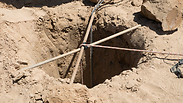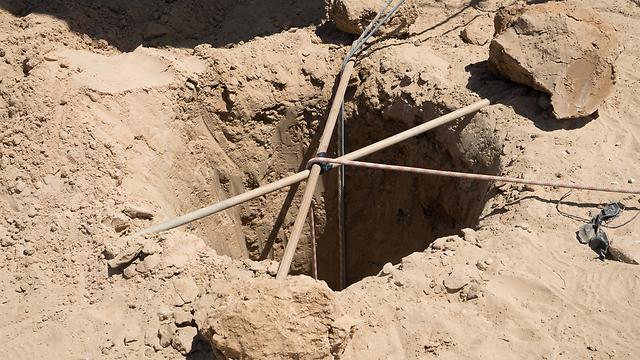
Shortly after the announcement, Hamas and Palestinian Islamic Jihad (PIJ) shot five mortars over the space of 30 minutes. IDF tanks returned fire on PIJ observation posts in Gaza.
Qatar is said to currently be mediating between Israel and Hamas to restore calm. The head of the Qatari delegation for the rehabilitation of Gaza, Mohammad Amadi, said that there are contacts between Israel and Hamas to deescalate the situation. According to him, the discussions are proving fruitful.
The new tunnel is 28 meters deep and it was found in southern Gaza in a 100-meter zone that Israel operates in. The new tunnel is located not far from the tunnel found last month, which was the first to be found since Operation Protective Edge in the summer of 2014.
While IDF forces found the tunnel itself, they have yet to find any exit shafts inside Israeli territory. The Engineering Corps troops are now working to discover the tunnel's entire path, including any possible exit shafts inside Israel, and then destroy it.
IDF engineering forces have been operating over the past few weeks in several locations along the Gaza border in search for additional border-crossing tunnels. Throughout the day Wednesday Hamas and other Palestinian factions fired six mortrar shells at the troops that were closing in on the tunnel in an effort to stop Israel from finding and destroying it. The IDF responded with tank fire and airstrikes against Hamas military targets in Gaza.
"This is a terror tunnel dug by the Hamas terror organization to carry out attacks inside Israel against its citizens and security forces and violate Israeli sovereignty," the IDF Spokesman's Office said in a statement.
"The IDF will continue in its actions to locate terror tunnels, using the different measures at our disposal, to thwart terror attacks against Israeli citizens and destroy the underground tunnels," the statement went on to say.
A senior IDF official said the military does not yet know whether the new tunnel was dug before or after Operation Protective Edge, but it was found intact.
"We're prepared for a situation of escalation," the senior official said. "The search for the tunnels is a main priority for the military. These tunnels constitute a subterranean violation of Israeli sovereignty and we will act against them."
He added that the IDF's intelligence, technological and operational effort against the tunnels have been successful.
He also denied Hamas claims that a ceasefire agreement has been reached according to which Israel will withdraw its troops from the Gaza border area and in return the Palestinian factions in the Strip will halt their rocket fire.
The tunnels spark concerns in Israel that Hamas is rebuilding its underground tunnel network in preparation for another conflagration. Toward the end of the 2014 war, Israel destroyed more than 30 tunnels Hamas had dug under the border. Hamas terrorists had used the tunnels to infiltrate Israel and carry out attacks.
According to a senior Southern Command official, Hamas employs 800 tunnel diggers who enjoy high salaries compared to other operatives in the organization, and Izz ad-Din al-Qassam Brigades chief, Mohammed Deif, considers the tunnels a flagship project highlighting the strengthening of the organization's military wing.



















